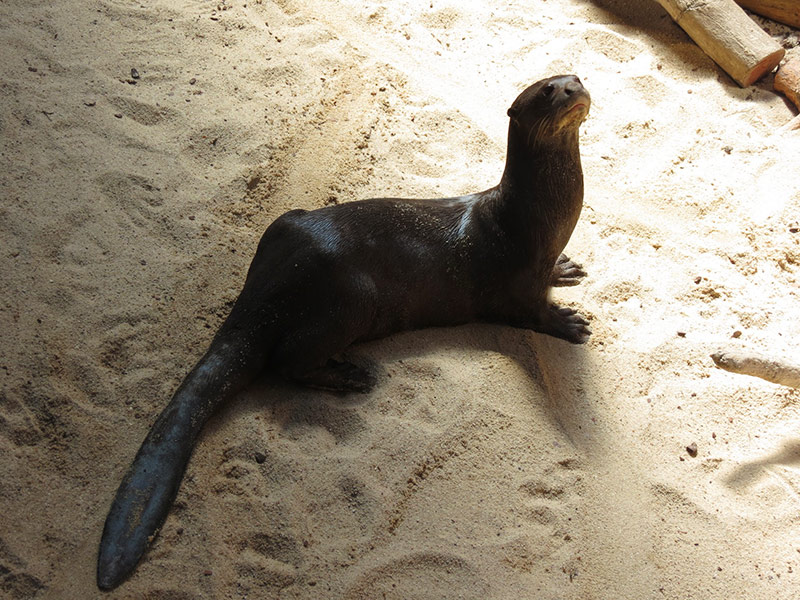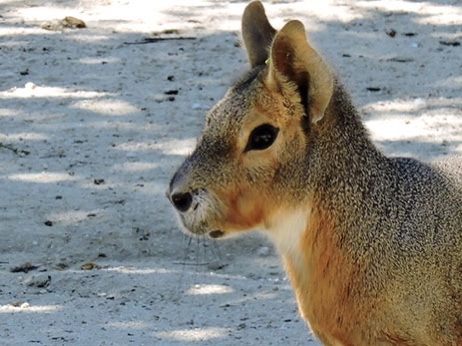This variety of otter, as its name indicates, is the largest of the otter family. It can reach almost 2 meters in length and 34 kilograms in weight.
The body of the Amazon giant otter is elongated; its legs, short and thick, end in large feet, provided with interdigital membranes that help it maneuver and gain momentum during slow swimming. When it wants to swim faster, it uses its tail, which is wide and flat.
Its fur is dark brown and very dense, except in the throat area, where it has several light spots.
Their life expectancy can exceed 15 years.
These otters inhabit rivers, lakes, streams and swamps of tropical forests in South America. It is there that they clear large areas of vegetation to build their dens.
It is a very sociable animal that lives in family groups of up to 16 individuals, formed by an adult pair and several generations of young.
Particularly noisy, active, curious and playful, it uses a wide repertoire of vocalizations (some of which are used, along with excrement and glandular secretions, to mark territory or to signal a threat).
Females give birth in the burrows, built near the river banks and fishing sites, between one and six young, after a gestation that lasts about 70 days. Males and older siblings participate in the rearing of the litter, whose vulnerability is sometimes exploited by caimans.
The diet of these giant otters consists mainly of fish, although they also eat crabs, snakes and even small caimans.
Poaching, habitat loss, overfishing and pollution are the factors endangering their existence.



















